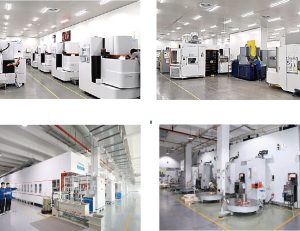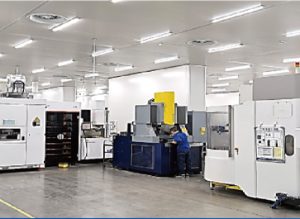Modern electrical systems depend critically on electrical safety. While they can harm equipment, electrical mishaps more gravely compromise personal safety. Therefore, how to effectively prevent electrical accidents has become the core goal of various electrical protection devices. Residual current operated circuit breakers (RCCD) are extensively applied in many different electrical systems as a fundamental protection mechanism. From four angles—working principle, kind and application, distinction from leakage protector, and installation and maintenance—this paper will go into great length on RCCD.

Residual Current Operated Circuit Breaker
Working principle of residual current operated circuit breaker
Usually sensing residual current in electrical circuits, residual current operated circuit breakers (RCCD) mostly serves protection. Normal operation of an electrical equipment results in a balanced circuit, that is, equal current flowing in and out. This balance is disturbed and residual current is produced in the circuit when a gadget fails or the human body comes into touch with the charged body. Inside RCCD is a current transformer that detects the imbalance of the inflow and outflow current, therefore sensing the existence of residual current. The RCCD will act fast to shut off the power supply when the residual current is sensed to reach the preset action current value, therefore preventing electric shock events and electrical fires.
RCCD’s fast response and great sensitivity help it to be very important for electrical safety protection. Especially in the home environment, due to the diversity and frequent use of electrical equipment, RCCD can effectively prevent electrical accidents caused by aging of electrical equipment, insulation damage, etc. By rapidly switching off the power supply, RCCD can also safeguard the safety of people and equipment in industrial and commercial surroundings. Generally speaking, RCCD monitors residual current to realize dynamic protection of electrical lines, therefore giving consumers consistent safety protection.
Forms and uses for residual current operated circuit breakers
Residual current operated circuit breakers (RCCD) can be divided into three categories: household, industrial and commercial according to different application scenarios and design characteristics. Residential electrical systems mostly use household RCCD to offer family members electrical safety protection. residential RCCD often has increased sensitivity and reduced rated current since residential electrical equipment is very limited. Installing domestic RCCD can help to greatly reduce electrical fires and accidents caused by electric shock, so safeguarding the safety of relatives.
Industrial RCCD is suitable for complex electrical systems in industrial environments. To handle high current and high load in industrial situations, industrial RCCDs must have more tolerance and larger working range. By installing industrial RCCDs, equipment damage and production accidents caused by electrical faults can be effectively prevented, ensuring the safety and continuity of industrial production. Mostly employed in commercial buildings and public institutions like offices, retail centres and hospitals, commercial RCCDs are found in Comprehensive electrical protection offered by commercial RCCDs guarantees public place users’ safety regarding the use of power. Reasonable selection and use of several kinds of RCCDs helps to satisfy the electrical safety requirements for varied situations, so giving consumers all-round protection.
Residual current operated circuits breakers differ from residual current protectors.
Though they are devices intended to detect abnormal currents in electrical systems and offer protection, residual current operated circuit breakers (RCCDs) and residual current protectors (ELCBs) have somewhat different functioning principles and relevant circumstances. RCCD detects residual current by detecting current imbalance and quickly cuts off power when abnormalities are detected. Its key benefits are great sensitivity and quick response times, which help to essentially avoid electric shocks and electrical fires.
Residual current circuit breakers (ELCBs), on the other hand, mostly detect ground current, therefore identifying electrical faults. The ELCB detects the current on the ground wire when leaks arise in the circuit and cuts off the power supply should the current beyond the designated level. While RCCDs are more efficient in shielding individuals from electric shock, ELCBs are mostly utilized to guard equipment and stop leaks-caused fires. ELCBs are usually used in industrial and commercial environments, while RCCDs are more widely used in homes and general industrial environments. RCCDs and ELCBs differ also in installation and maintenance. RCCDs’ detecting concept is based on the imbalance of current, so their installation position and wiring technique are rather flexible and unaffected by grounding conditions. Conversely, ELCBs must be tightly coupled to the ground wire, hence particular care should be taken to the integrity of the grounding system during installation and maintenance. By correctly selecting and applying RCCDs and ELCBs, effective electrical protection can be provided according to different safety needs.
Residual current operated circuit breaker installation and maintenance
Important assurances for their normal running are good installation and frequent maintenance of residual current operated circuit breakers (RCCDs). First choose the suitable model and specification depending on the real state of the electrical system to guarantee that RCCDs satisfy the needs of the use environment. During the installation process, it is necessary to follow the relevant electrical specifications and standards to ensure that the wiring is correct and avoid misoperation or failure caused by incorrect wiring. Especially in wiring, one should pay close attention to the connection position of the arriving and leaving lines to guarantee that the current transformer may faithfully detect the changes in the circuit.
After the installation is completed, comprehensive testing and inspection should be carried out to verify the working performance and sensitivity of the RCCD. By means of simulated fault testing, it is guaranteed that the RCCD can rapidly turn off the power supply upon an anomaly detection, therefore offering efficient electrical protection. Test findings should be noted and changed as necessary during the test to maximize it. Furthermore crucial assurances to assure the long-term and steady running of the RCCD are frequent maintenance and inspection. The RCCD’s look and wiring should be routinely checked during maintenance; dust and trash should be cleansed; and the equipment should be spotless and in good operating order. To guarantee the sensitivity and dependability of the installed RCCD, a thorough test and inspection schedule should be developed. During use, if it is found that the RCCD is frequently operating or cannot work properly, the cause of the fault should be promptly investigated and repaired or replaced accordingly. By means of scientific installation and consistent maintenance, the protective function of the RCCD can be maximized to guarantee the stable and safe running of the electrical system.

Kemus Residual Current Operated Circuit Breaker (RCO)
Modern electrical protection systems depend much on residual current circuit breakers (RCCDs). By effectively detecting and cutting off residual current in electrical circuits, RCCDs can prevent electric shocks and electrical fires, and protect personal and property safety. With an eye toward helping readers better grasp and use this crucial electrical protection device, this article explores in great detail the working principle, kinds and uses of RCCDs, the variations from residual current protectors, and their installation and maintenance. With ongoing technological development, RCCD performance and application areas will grow in the future, so offering more complete and dependable protection for electrical safety.
Post time: 7 月-09-2024


